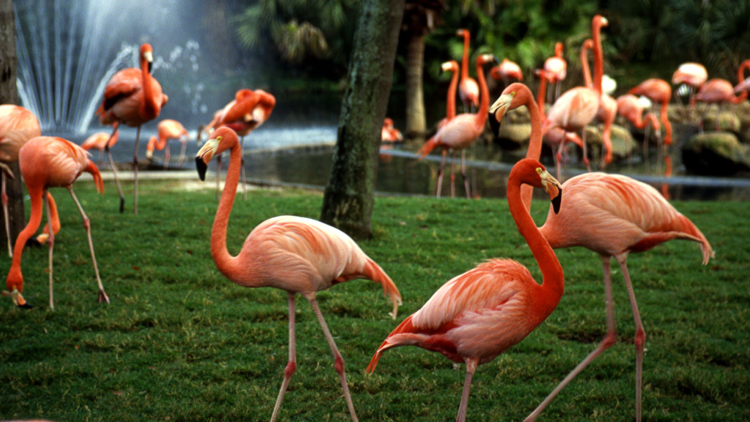
At the zoo, flamingos steal the show! People love to watch these unusual pink birds standing on one leg. Surprisingly, flamingos are not pink when they are born. Young flamingos turn pink because of the food in their diet. Flamingos really are what they eat. Their food contains a pigment called beta-carotene. Beta-carotene gives carrots their orange color and makes ripe tomatoes red. Flamingos’ primary food sources are algae and shrimp, which contain beta-carotene. As flamingos consume more algae and shrimp, their feathers turn brighter shades of pink.
In the wild, flamingos live near lakes and rivers where the weather is warm. They live in Florida, Central, and South America. Flamingos have special anatomical features that help them survive. Their strong, stilt-like legs keep them balanced when they wade in deep water. To preserve energy, flamingos can stand on one leg for hours at a time. When you watch flamingos move, it appears as though their legs are bending backwards—but they are not. What you see bending is actually their ankle joint. Their knees are hidden high underneath their feathers. They look like they are standing on their tiptoes. Flamingos are equipped with special bills, too. When they eat, flamingos turn their heads upside down. They use their large, hook-shaped beaks to suck up water and mud. They are called filter feeders because once a flamingo sucks up dirt and water into its bill, the bill acts as a filtration system, separating the mud from food.
Flamingos are very social. They live in groups called colonies. Some colonies have more than a thousand members. Could you imagine living with that many people? For flamingos, it is a way of life!
What Do You Think? Why do you think flamingos live in large groups?
Reading Response Click on this link to respond to your reading. Print out the response page or upload it to your classroom site.
Photo Credit: Chuck Eckert / Alamy
